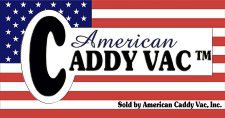by Travis Tassey
(Reprinted with permission from DucTales January-February, 2014) nadca.com and BreathingClean.com
As a specialty cleaning contractor, people often ask why I’ve chosen to clean air conveyance systems (systems that move air from one place to another), particularly air conditioning systems. Most people assume that since filters are installed, the systems never need to be cleaned. While this would be true in a perfect world, any and all air conveyance systems need maintenance. The filters need to be changed, the fan drive systems need adjusting and portions of the system need to be inspected.
One of the primary reasons that particulates get into a system at all is because they’re able to get past the filtration system. A variety of reasons for this exist: The filters aren’t efficient enough for the type of environment, aren’t changed often enough, don’t fit properly, etc.
THE CALL FOR CLEANING
Most people wouldn’t have any idea these things are happening in the systems that deliver the air they breathe. So why do these systems get looked at in the first place? The catalyst for HVAC inspections is generally due to an occupant complaint, such as:
-Dust or dirt being discharged into the spaces they occupy
-Musty odors are coming from the HVAC system when it’s running
-Reduced airflow from the system, which prevents it from achieving thermal comfort
-Unwanted contaminants are discovered during routine maintenance of the air handling unit
-Mold or other contaminants are found in the HVAC system by an indoor air quality survey
Secondarily, the systems get looked at or inspected due to legislated requirements in Australia. There are several requirements and guidelines that describe the necessity for HVAC inspections and cleaning. These documents are specifically focused on public buildings, such as commercial office buildings, hospitality venues, healthcare buildings, etc… Some of these mandates are:
-Australian General Duty of Care 2005
-Australian Occupational Health and Safety Act 1984 (Section 5)
-Australian Standard 3666.2 (Section 2.3.5)
-AIRAH HVAC Hygiene Best Practice Guidelines (Section 1.10.1)
-NADCA ACR-2013 (Section 1.5.1)
The spirit and intent of these documents is to provide the public and workers with a clean and healthy indoor environment. Since a great deal of the public spends 35 percent of their daily lives inside a public building, the HVAC systems play a larger part in their potential exposure to harmful contaminants. It is for ALL the reasons stated above that we are compelled to maintain and clean the HVAC systems in our buildings.
THE BASICS OF CLEANING
Most international references calling for the cleaning of HVAC systems (including the ones above) refer back to the National Air Duct Cleaners Association (NADCA). The most current standard is called ACR-2013. This is the NADCA Standard for Assessment, Cleaning and Restoration of HVAC systems. The standard calls out very specific requirements for the proper methodology of cleaning HVAC systems.
Service Industries have standards for two reasons:
- They establish minimum performance levels and methodologies for the service.
- They set the expectations the public should have when purchasing the services.
ACR-2013 is a living document, meaning that NADCA constantly reviews its content to keep up with new technologies and proven methodologies. The first standard was released in 1992. The basics of cleaning HVAC systems have largely remained the same: Clean the HVAC system without contaminating the areas around you while doing it. Over the past 20 years, we have evaluated and included new equipment and methodologies that allow us to clean better and deal with global cleanliness issues found within HVAC systems.
The standard calls for a few important methods that must be followed to effect a proper cleaning. First, any cleaning equipment that exhausts inside the building must be HEPA filtered. Second the HVAC system being cleaned must be placed under negative pressure (suction) during the cleaning process. While there are many different types of tools and equipment to dislodge, capture and entrain the dust/dirt from within any given HVAC system, the most important function is to clean without contaminating the occupied space.
The standard also defines what is considered clean, and three different methods of determining clean. These are: visual inspection, surface comparison testing, and gravimetric analysis. These are to ensure that the client and contractor can agree that the system has been properly cleaned.
Finally, the standard sets forth job documentation as part of the project. According to NADCA ACR-2013, “It is recommended that documentation showing compliance with this standard is provided for all work performed. Documentation can include organized and legible written and visual records.” This statement requires the contractor to show evidence that the system has been cleaned to the standard. This can be done by showing photographic or robotic video, along with project reports or drawings, that show the system has been properly cleaned.
All HVAC systems will get dirty over time. The government has made it clear that it expects building owners and operators to inspect and maintain these systems. As an industry, we have supplied cleaning standards to ensure that duct cleaning projects are done correctly and to the client’s satisfaction. We owe it to ourselves and our clients to perform cleaning works to an internationally recognized standard.
